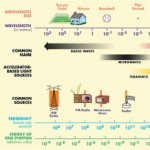- This topic has 13 replies, 8 voices, and was last updated 9 years, 7 months ago by
 Rajguru M. Mohan.
Rajguru M. Mohan.
-
AuthorPosts
-
-
March 15, 2016 at 5:48 am #32847
 Ranjeet KumarParticipant
Ranjeet KumarParticipantHi All,
we can calculate the subcarrier frequencies. The subcarrier frequencies are integer multiples of 1/Tsymbol, where
Tsymbol is the duration of an OFDM symbol.
The pdf uploaded here is that of OFDM modulator, In this file i am unable to understand why the subcarrier frequencies are 1.25 ghz, 2.50 ghz, 3.75 ghz. I request you all to please explain how i will get duration of OFDM symbol. -
March 15, 2016 at 7:34 am #32851
–
ParticipantHi Ranjeet, the subcarrier frequencies are as you have stated above because the frequency spacing between two consecutive subcarriers is 1.25 GHz. Since in OFDM the subcarriers are numbered like 1,2,3,…. Now if we multiply each of them by frequency gap, we get 1.25 ghz, 2.50ghz,…
-
March 15, 2016 at 10:35 am #32871
 FAYIQA NAQSHBANDISpectator
FAYIQA NAQSHBANDISpectatorHELLO RANJEET
Well i find the comment posted by gokul boro very useful in this regard. If you see the the frequency spacing between two consecutive subcarriers is 1.25 GHz and he’s right that the subcarriers are numbered like 1,2..so on . By multiplying the each of them by frequency gap, we get 1.25 GHZ 2.50 GHz respectively. I feel this should be enough for you to understand.
Thanks and regards -
March 15, 2016 at 10:44 am #32875
 SAHIL SINGHParticipant
SAHIL SINGHParticipantHi Ranjeet
I completely agree with both Fayiqa Naqshbandi and Gokul Boro.The frequency spacing between two consecutive subcarriers is 1.25 GHz and the subcarriers are numbered like 1,2..so on . By multiplying each of them by frequency gap, we get 1.25 GHZ 2.50 GHz respectively. Hope this helps.
Thanks and regards
Sahil Singh
-
March 15, 2016 at 1:38 pm #32891
 Mohamed Ben zegalamParticipant
Mohamed Ben zegalamParticipantHi Ranjeet,
I agree with previous statements from Fayiqa Naqshbandi, Gokul Boro, and SAHIL SINGH. but first you need to know how to calculate the frequency spacing, then the subcarrier frequency will be as mention before
frequency spacing (dalta F)= Bit rate/(log2(M)*Nsc)
where the M is the M-array of the modulation, and Nsc is the number of subcarriers
hopefully this help you.
Kind regards
Mohamed -
March 16, 2016 at 12:21 am #32900
 Ranjeet KumarParticipant
Ranjeet KumarParticipantThank you for your considerable response,
Earlier i was unable to understand properly the topic being discussed.
I think the answer will be as:
possible
For examples if the global bit rate is 40Gbit/ and a QPSK modulation (2 bits per symbol), the symbol rate will
be 20Gsym/s. In both cases there are a total of 128 sub-carriers available such that:
OFDM symbol period = Symbol period * 128 = 128/(Symbol rate) = 2 * 128 /Global bit
rate.-
March 16, 2016 at 12:31 pm #32960
 Mohamed Ben zegalamParticipant
Mohamed Ben zegalamParticipantHi Ranjeet,
Your example is correct, and it is the same as my explanation. because
OFDM symbol period= 1/frequency spacing (dalta F).
so if you take frequency spacing (dalta F)= Bit rate/(log2(M)*Nsc), then
OFDM symbol period= (log2(M)*Nsc)/Bit rate, as per your example
OFDM symbol period= (2*128)/40Gbps
Kind regards
Mohamed
-
-
March 16, 2016 at 12:45 am #32914
 SAHIL SINGHParticipant
SAHIL SINGHParticipantHi Ranjeet,
You are absolutely right.. It seems that you got the desired help you were looking for…
Regards
Sahil Singh
-
March 16, 2016 at 12:59 am #32918
 Ranjeet KumarParticipant
Ranjeet KumarParticipantHi Mohammad Ben,
acoording to you, the frequency spacing, then the subcarrier frequency will be as mention before
frequency spacing (dalta F)= Bit rate/(log2(M)*Nsc) where the M is the M-array of the modulation, and Nsc is the number of subcarriers
for bit rate of 10 gbps and no. of subcarriers = 4, and M = 4, we will get delta F = 10ghz /[(log2{4})*4] = 1.25 ghz;
You really make me understand, it may also be another explanation.
Thank you. -
March 18, 2016 at 2:49 am #33063
–
ParticipantThanks to everyone for participating in this discussion. It was indeed a useful discussion for me.
I want to know if there is any formula for calculation of OFDM bandwidth after OFDM block (I & Q separately) as well as One after RF-upconversion. -
March 18, 2016 at 4:15 pm #33184
 Ranjeet KumarParticipant
Ranjeet KumarParticipantThanks Mohamed Ben zegalam, sahil singh and Gokul for your approval and considering my responses.
It was really a nice and healthy discussion. thank you all -
March 20, 2016 at 9:36 am #33304
 MHD NAParticipant
MHD NAParticipantIf you see the the frequency spacing between two consecutive subcarriers is 1.25 GHz and he’s right that the subcarriers are numbered like 1,2..so on . By multiplying the each of them by frequency gap, we get 1.25 GHZ 2.50 GHz respectively.
-
April 26, 2016 at 8:12 pm #38545
 Rajguru M. MohanParticipant
Rajguru M. MohanParticipantHi Ranjeet,
I think the answer will be as possible
The subcarrier frequencies are integer multiples of 1/Tsymbol, where Tsymbol is the duration of an OFDM symbol.
And in OFDM the component allows the introduction of a cyclic extension of the symbol transmitted
or a guard time with zero transmission. The parameter Number of prefix points will
define how many points will be used in the guard period.
For examples if the global bit rate is 40Gbit/ and a QPSK modulation (2 bits per symbol), the symbol rate will
be 20Gsym/s. In both cases there are a total of 128 sub-carriers available such that:
OFDM symbol period = Symbol period * 128 = 128/(Symbol rate) = 2 * 128 /Global bit
rate.Thanks,
-
-
AuthorPosts
- You must be logged in to reply to this topic.

